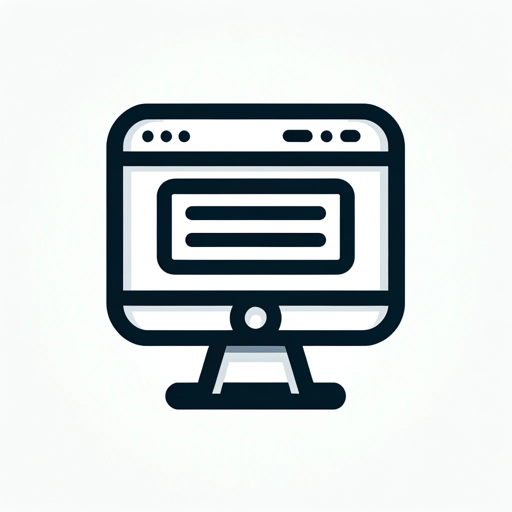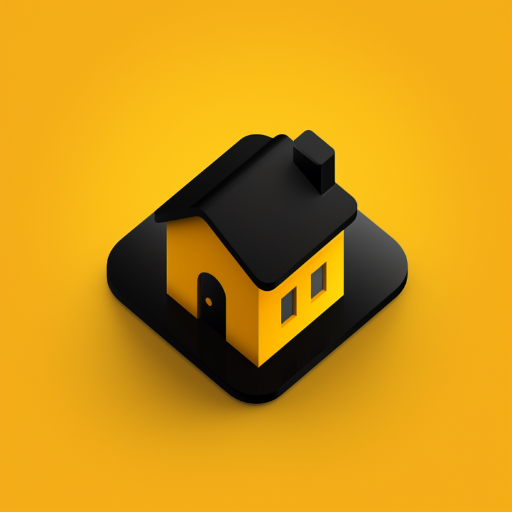Web Builder-AI-powered website building tool
AI-Powered Website Building Made Easy
我想创建一个公司官网
我想创建一个博客网站
我想创建一个导航网站
我想创建一个电商网站
Related Tools
Load More
Website Builder
Creative assistant for website building and design ideas.

Divi Builder
WordPress DIVI Theme Expert: Design, Troubleshooting, Copywriting
AI Website Builder
Type the details about your site's purpose, services, creators, and unique benefits. Feel free to write in any language. After using Free AI Website Builder & Generator, download your site as a zip file⬇️ and publish it on any host🌐.

Webflow Wizard
Webflow Wizard is your go-to GPT tool for Webflow development, streamlining your workflow with in-depth knowledge at your fingertips.

Web Builder
Create and host webpage for you.

Web Crafter
Beginner-friendly coding assistance for building simple web apps.
20.0 / 5 (200 votes)
Introduction to Web Builder
Web Builder is an AI-powered assistant designed to guide users through the process of creating and launching a website. It caters to both beginners and experienced developers by offering step-by-step instructions, functional suggestions, and real-time problem-solving support. The primary design purpose is to simplify the website creation process, making it accessible and manageable for users with varying levels of technical expertise. For instance, a small business owner with no prior coding experience can utilize Web Builder to create a professional company website by selecting from pre-defined functionalities or customizing features as needed. Web Builder supports the entire process, from initial concept to deployment, ensuring that the final product meets the user's specific needs.

Core Functions of Web Builder
Guided Website Creation Process
Example
A user wants to create a personal blog. Web Builder offers five different blog-specific templates with varying features like comment sections, social media integration, and search functionality. The user selects a template and follows the provided steps to customize and build the blog.
Scenario
A writer with minimal technical skills can use Web Builder to set up a blog, selecting features such as a simple content management system (CMS) and SEO tools. Web Builder guides them through adding a custom domain, setting up hosting, and launching the site.
Custom Functionality Implementation
Example
A startup needs a website with a unique e-commerce feature that allows users to customize products before purchasing. Web Builder allows them to describe this feature, then provides guidance on how to implement it using existing frameworks or custom code.
Scenario
A custom furniture company wants users to design their furniture online. Web Builder assists in implementing a dynamic product customization tool, offering suggestions on frameworks and helping with the code integration into the website.
Real-time Problem Solving
Example
A user encounters a problem where their contact form is not working. They describe the issue or upload a screenshot, and Web Builder analyzes it, identifies the issue, and provides a solution, such as correcting the form's backend integration.
Scenario
During the website's testing phase, a freelancer realizes that the contact form doesn't send submissions to the designated email. Web Builder helps them troubleshoot by reviewing the form's code, suggesting adjustments, and testing the fix.
Ideal User Groups for Web Builder
Small Business Owners
Small business owners often need a professional online presence but lack the time or technical skills to build a website from scratch. Web Builder provides a simplified path to website creation, allowing them to choose from predefined templates or customize features that suit their business needs. For instance, a local bakery can quickly create a website with an integrated menu, online ordering system, and social media links, without needing to hire a developer.
Freelancers and Independent Creators
Freelancers and creators such as writers, designers, and photographers benefit from Web Builder's ability to create portfolio websites, blogs, or e-commerce sites. They can leverage Web Builder's guided steps and customization options to showcase their work professionally. For example, a freelance graphic designer can use Web Builder to create a visually appealing portfolio with galleries, testimonials, and a contact form, enhancing their online visibility and client acquisition.

How to Use Web Builder
Step 1
Visit aichatonline.org for a free trial without login, also no need for ChatGPT Plus.
Step 2
Identify the type of website you want to create. Consider factors such as the website’s purpose, target audience, and necessary features.
Step 3
Select from pre-defined templates or upload a screenshot of a website you like to get a list of recommended features. Customize the selected features as needed.
Step 4
Follow the step-by-step guidance provided by Web Builder to construct your website, starting from the front-end design to the back-end functionality.
Step 5
Review and test your website, make any necessary adjustments, and proceed to publish it live. Use the troubleshooting feature if you encounter issues during the process.
Try other advanced and practical GPTs
Mystic Tarot Reader
AI-powered tarot insights for clarity

Homebase
Store and access AI-powered tools.

Grant Writing Guru - Dr. Grant Rider v2
AI-powered grant writing excellence.

Web Reader
AI-Powered Content Analysis and Summarization

Otto the AuditBot
AI-powered audit guidance at your fingertips.

PDF AI
AI-powered PDF analysis tool

Personal Brand Strategist
AI-powered LinkedIn branding assistant

PC Builder GPT
AI-powered tool for custom PC builds

GPT Instruction Builder
AI-powered systematic instruction creator.

Resolution Matcher Support
AI-powered resolution management for gaming and streaming.

Gecko Tech SEO Hashtag Helper
AI-powered tool for optimized hashtags.

ArguBot
AI-powered tool for mastering debates

- SEO Optimization
- E-commerce
- Content Management
- Custom Design
- Website Creation
Web Builder Q&A
What types of websites can Web Builder create?
Web Builder can create a wide range of websites, including business websites, e-commerce stores, blogs, portfolios, and personal websites. It offers customizable templates and features tailored to different types of sites.
Do I need coding skills to use Web Builder?
No coding skills are required. Web Builder provides a user-friendly interface with step-by-step instructions. However, for those with coding knowledge, there is the option to add custom code for further customization.
Can I modify the website features after starting the build?
Yes, you can modify the website features at any stage of the building process. Web Builder allows you to add, remove, or adjust features as your website evolves.
How does Web Builder assist with SEO?
Web Builder includes built-in SEO tools to optimize your website for search engines. It offers tips on content optimization, meta tags, and more to help improve your website’s visibility.
Is it possible to integrate third-party tools with Web Builder?
Yes, Web Builder supports the integration of various third-party tools such as payment gateways, analytics, social media platforms, and more to enhance your website’s functionality.